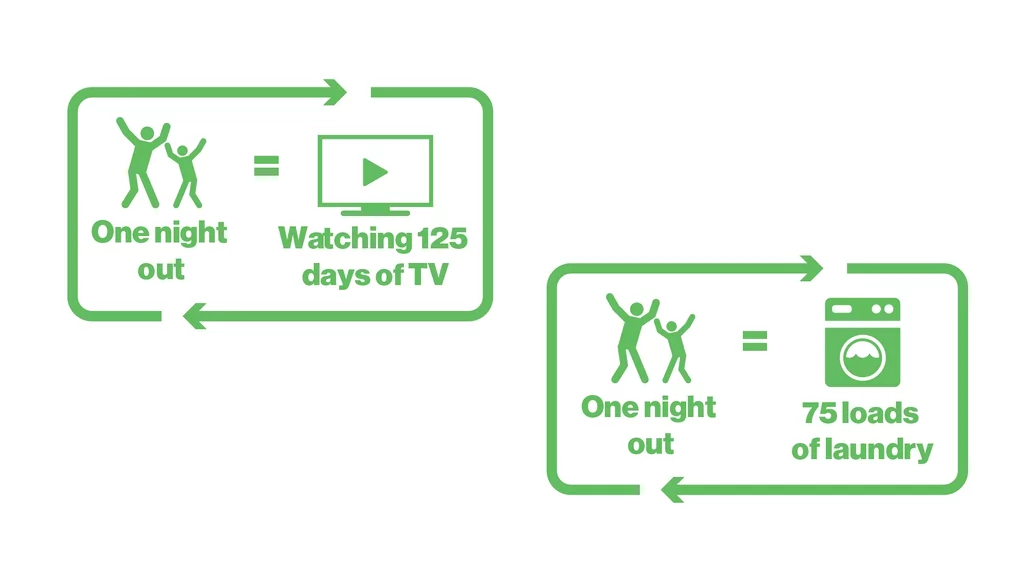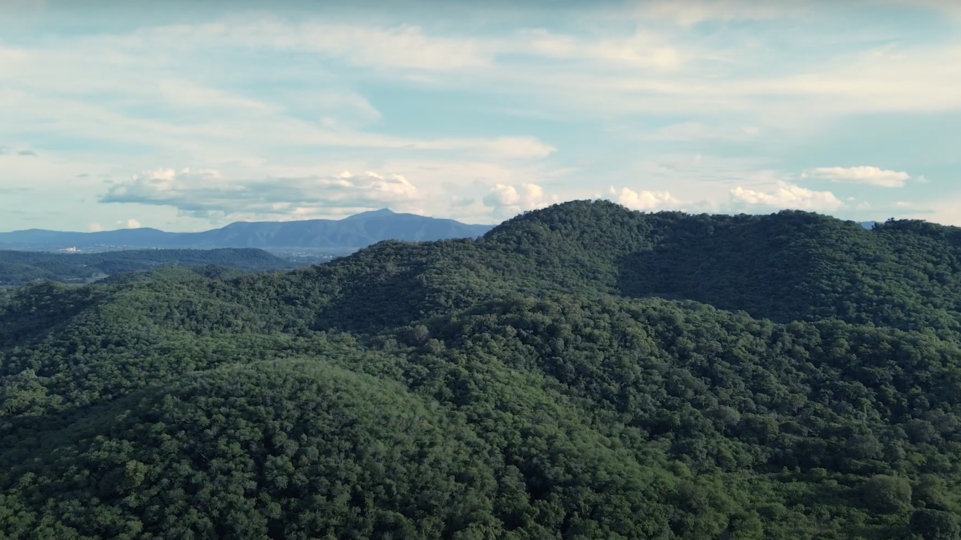
Dance Yrself Green: can clubbing generate renewable energy?
Emerging technology, BODYHEAT, promises to make clubs more carbon neutral. Sophie Lou Wilson speaks to those behind it, the first club to trial it (SWG3 Glasgow), and others about how it works, as well as its potential and limits
Fifteen minutes’ walk from the site of the 2021 UN Climate Change Conference, there’s a nightclub. SWG3 is an independent venue that has put on events with some of the world’s top electronic artists. It’s also the first club in the world to install BODYHEAT, a renewable heating and cooling system that converts heat from dancing clubbers into energy. To celebrate the technology — the installation has started, and it’s expected to be in use by Spring 2022 — SWG3 hosted a party headlined by Honey Dijon during COP26.
It’s all part of the venue’s plan to be carbon neutral by 2025. The company behind BODYHEAT is geothermal energy consultancy TownRock, founded by geologist and clubber David Townsend, who came up with the idea while dancing at a sweaty club night himself.
“I got really, really hot,” he says. “I realised that the whole crowd was really hot, and this was a big source of waste heat.” The BODYHEAT system takes this waste heat and recycles it, storing it in boreholes before turning it into energy to cool down the club. Essentially, Friday night’s party fuels Saturday night.


It makes sense to look to nightclubs in the fight against climate change. According to electric utility company E.ON, one night out can cost as much as watching 120 days of TV, washing 75 loads of laundry, or 125 hours of vacuuming. The current generation of young clubbers is as passionate about saving the planet as partying, too; a 2021 survey conducted by Deloitte found that climate change and protecting the environment are the main concerns for Gen Z. Installing sustainable technologies could attract more customers to venues, who can offset their hangover guilt with the knowledge that their dance moves helped offset carbon emissions.
SWG3’s Managing Director Andrew Fleming-Brown acknowledges that installing BODYHEAT comes with risks, especially in light of the Covid-19 pandemic. The technology is a big investment, costing SWG3 “10 times more” than a traditional air-conditioning system for a similarly sized space. With venues as cash-strapped as ever after over two years of pandemic-related restrictions, it might not be realistic for the system to expand to other clubs anytime soon.
“There are risks with anything,” Fleming-Brown says, “but the very obvious risk is the potential of a future lockdown or significant drop off in our audience numbers. This system was designed off the back of our 2019 visitor numbers, which saw over 250,000 attendees. Since reopening, we have seen an increase month on month despite a large attrition from events, but the demand for live events seems to be stronger than ever.”
“The pilot system at SWG3 will allow for vast data to be collected, which will help us understand and optimise the system’s efficacy with learnings that can be applied to systems in the future,” David Townsend explains. He envisions the technology eventually being used in any crowded space where body heat is generated.
However, the cost can be prohibitive without outside financial support. Phase 1 of the BODYHEAT SWG3 project was part funded through the Scottish government’s Low Carbon Infrastructure Transition Project (LCITP), and will cost £350,000. The running cost is similar to its existing system, but savings on heating and cooling the venue will be significant. Support from the government or from corporate sponsors, such as alcohol companies, will be a key component if this technology is going to make its mainstream breakthrough.


“If people really care about climate change and making an impact, it’s got to be a team effort. It’s something we have to look at as an electronic music and nightlife community" — Eli Goldstein, SOUL CLAP
While the pandemic launched governments around the world into action to save their cities’ night-time economies, clubs have often been undervalued, and were struggling long before 2020. More than a quarter of nightclubs in the UK have permanently closed since 2015, with rising inner-city rents and redevelopments pricing them out. With all this to contend with already, how realistic is it to expect them to invest vast amounts of money on new technology?
Eli Goldstein is one half of house / funk duo SOUL CLAP and a core member of DJs For Climate Action. He recognises both the potential and limitations of sustainable technologies. “Technological advances are key to the entire fight against climate change and slowing down emissions, but until these technologies become more affordable, it’s going to be hard for them to really become widespread at venues,” he says. “If people really care about climate change and making an impact, it’s got to be a team effort. It’s something we have to look at as an electronic music and nightlife community. It’s great that SWG3 is taking a leadership role, and it’s really important to have those early adopters; they can learn from it, then collaborate with smaller venues to bring this technology on more cheaply and efficiently.”
In early 2022, TownRock Energy will launch BODYHEAT CLUB, an online interface where clubs can publish and promote their certified low-carbon credentials. It’s part of a vision for the future that includes nightclubs, working to see who can be the most eco-friendly. There is a risk, however, that smaller venues with smaller budgets could struggle to compete and get left behind. While clubs with smaller capacities release fewer carbon emissions, technologies that can make clubbing better for the environment than staying at home are out of reach without funding.
As with all efforts to save the planet, collaboration is key. Goldstein cites legislation and the availability of these technologies as further obstacles to their implementation. “I wish that with government grants there were recommendations and regulations about spending some of it on technology or solutions to reducing emissions,” he says. During the pandemic, most grants went towards simply being able to reopen doors to clubbers after spending 16 months shut; perhaps in the future, governments could set aside money to help venues reach carbon neutrality.


There is already proof that this kind of technology can work. While BODYHEAT is the first of its kind, it’s not the first technology to use clubbers to generate renewable energy. In 2008, Rotterdam-based start-up Energy Floors opened Club Watt, the world’s first sustainable club, using a dancefloor that generated energy from clubbers’ steps. It produced 30% less CO2 than regular clubs.
“The modules are placed individually on or in the existing floor,” explains founder Michel Smith. “We look at what type of energy is available and what is the most efficient way to convert this energy into usable electricity. We can send the energy generated back to the tiles to power the LED-lights, back into the grid, charge a battery, or power whatever electronic device is chosen. We have charged thousands of mobile phones at festivals, powered lights in clubs, and even powered a Christmas tree on a public square in Madrid once.”
Today, Energy Floors produces two different types of energy-generating floors for clubs and festivals globally, using movement and sunlight. The first floor is kinetic: producing two watts of energy per step, with up to 30 watts generated from dancing clubbers. The second floor is solar: used at festivals and outdoor events to generate energy from the sun, producing up to 100 watts per square metre.
The floors are expensive to install, but prices vary massively depending on the venue. Temporary installations of the kinetic floor start at 2000€ and can hit the tens of thousands for large scale events that take place over a number of days or weeks, especially if they’re overseas. Energy Floors had a dancefloor at Californian mega-festival Coachella for three years running, as well as pop-ups at museums, shopping centres and parties. (Most of these installations have been temporary because clients want to trial the technology without making an investment upfront.)
Conversations about fighting climate change often dwell on the severity of the crisis, but what if we could approach it the same way we approach a night out? With optimism and excitement about its potential, and a little trepidation, too. Innovative technologies like BODYHEAT let clubs go beyond paper straws to combat the climate crisis in a way that includes every clubber. As we consider the society we want to re-enter, saving the planet through dancing might sound like a utopian ideal, but it could become a necessary reality. After all, there would be no dancing on an uninhabitable planet.





